
Rabbits might be cute – with their huge ears, soft furry bodies, bunny hops, and wiggly noses – but that adorableness quickly fades once you see the damage they can do to your vegetable crops!
Though they are found all around the globe, more than half of the world’s total rabbit population resides in North America. They can be spotted munching on greenery in even the densest of urban settings.
With voracious appetites and often descending in numbers, rabbits will feast on pretty much any tender plant but have a particular fondness for foods grown within the vegetable garden: beets, beans, carrots, lettuce, broccoli, peas, collards, and cilantro.
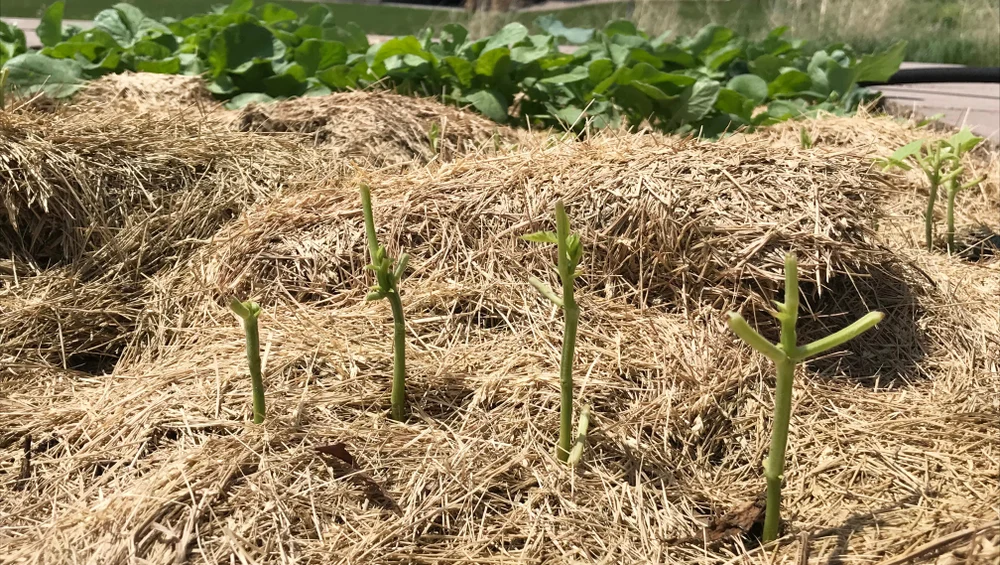
They will also feed on flowers and other ornamental plants. In winter when food is scarce, rabbits will strip the bark from trees and shrubs.
Be ready this spring by combining several different rabbit repelling techniques that will help safeguard your prized plants.
1. Garden Fencing
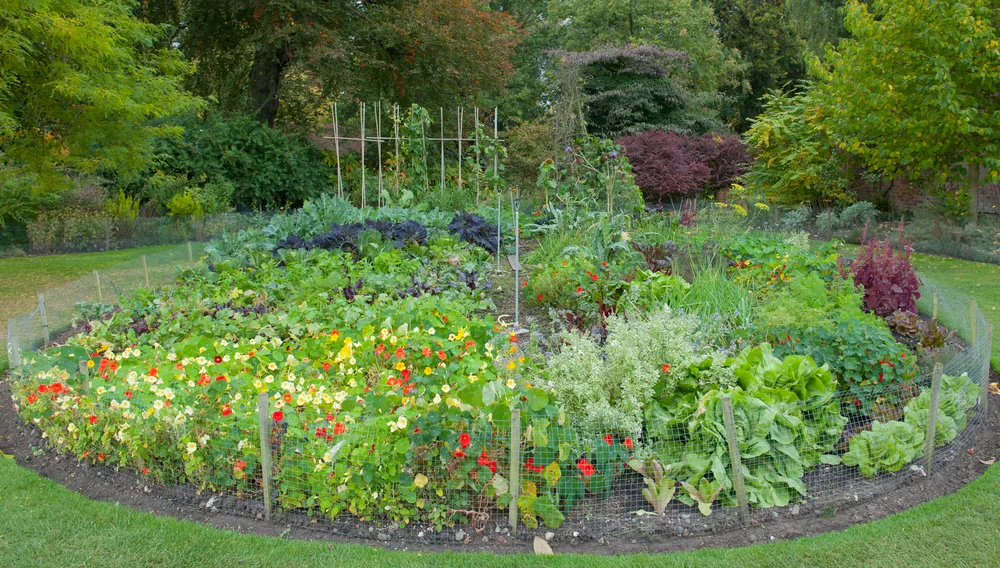
Erecting a physical barrier around your vegetable patch is one of the best ways to protect against rabbits and other foraging wildlife.
To ensure your fence is effective against rabbits, plan to construct an enclosure that is at least 3 feet high when complete – which is tall enough to prevent them from leaping over it.
An easy and inexpensive way to quickly fence in your garden is to use metal mesh attached to sturdy wooden or metal posts. Don’t use fiberglass or plastic mesh, as rabbits will chew right through these materials.
A galvanized wire mesh, like this one, with openings no larger than 1” by 1” will prevent rabbits from squeezing through. You can also double up the mesh, staggering it slightly, to add a bit more protection.
To thwart digging beneath the fence, bend the mesh at a 90° angle along the bottom and bury it about 6 inches deep. When hanging the gate, ensure that it is flush with the threshold and there are no gaps for the bunnies to slip through.
Drive a few ground staples in this space to block any attempts at burrowing underneath.
Here are some more inexpensive DIY fence ideas – some of which will, and some of which won’t, be suitable for keeping rabbits out.
2. Protect Trees and Shrubs
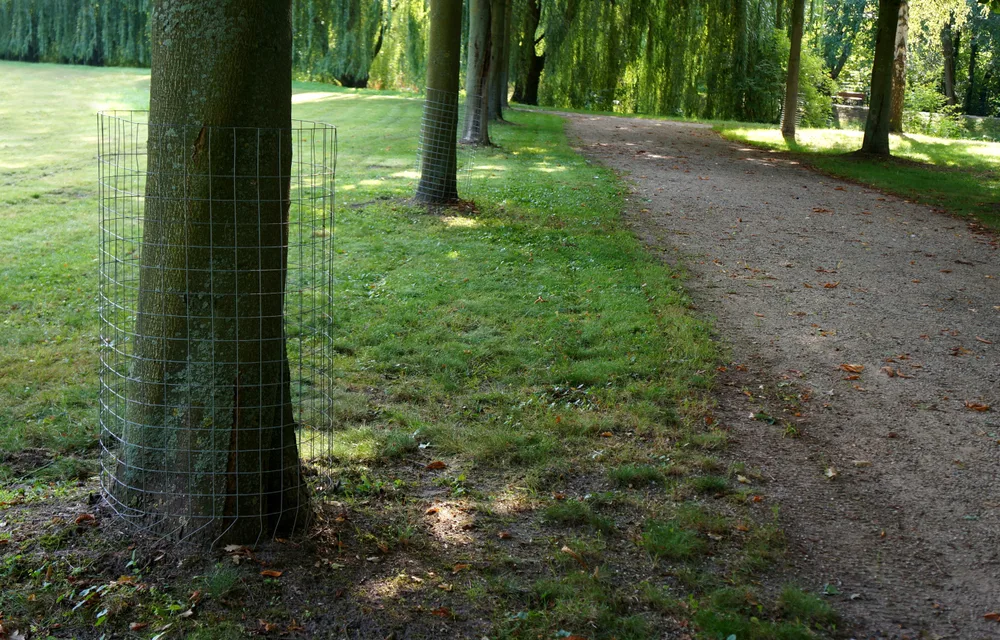
In winter, any small tree or shrub in your yard is prone to damage when a population of rabbits live nearby.
Because tender greens are non-existent during this period, rabbits will feed on the vascular tissues between the bark and the wood to survive.
When enough of this inner layer, known as the cambium, is consumed, the flow of nutrients and water from the roots to the leaves of the plant is disrupted.
Without the cambium, the plant has no access to food and cannot repair itself. The death of a tree due to the removal of the cambium is called “girdling”.
Plants that are frequently girdled by rabbits in winter include crabapple, apple, pear, honey locust, burning bush, barberry, raspberry, blueberry, roses, redbud, and small evergreens like pine.
The most effective way to protect these and other small trees and shrubs from rabbits is to erect a physical barrier around each plant individually.
For larger trees, this can be accomplished by creating a small fence around the trunk with galvanized wire mesh, leaving around 3-inches of space between the mesh and the trunk. As with the garden fence, you will want to bury the mesh about 3 inches around the perimeter to avoid burrowing. For small trees and saplings, you can wrap the trunk with spiral tree guards.
Whatever barrier you choose, it should be at least three feet high. After a heavy snow, check your wrapped trees to make sure rabbits do not have better access above the enclosure due to snowdrifts.
3. Use Natural Rabbit Deterrents
While fencing and barriers work great for deterring rabbits, it’s simply not practical to hem in every single cultivar in your garden.
Rabbits have been helping themselves to the gardener’s bounty for time immemorial, and so there are many old timey tricks handed down through the generations:
Scatter Human Hair
After a haircut or a beard trim, collect the hair clippings and scatter it on the soil around your plants.
Not only is the hair good for the soil, the scent of human tresses will inspire fear in your backyard bunnies since it smells just like us.
In the rabbit mind, humans can only mean trouble and will move along to decidedly human-free areas. If you’re short on human clippings, try using pet fur instead.
Add Some “Predators”
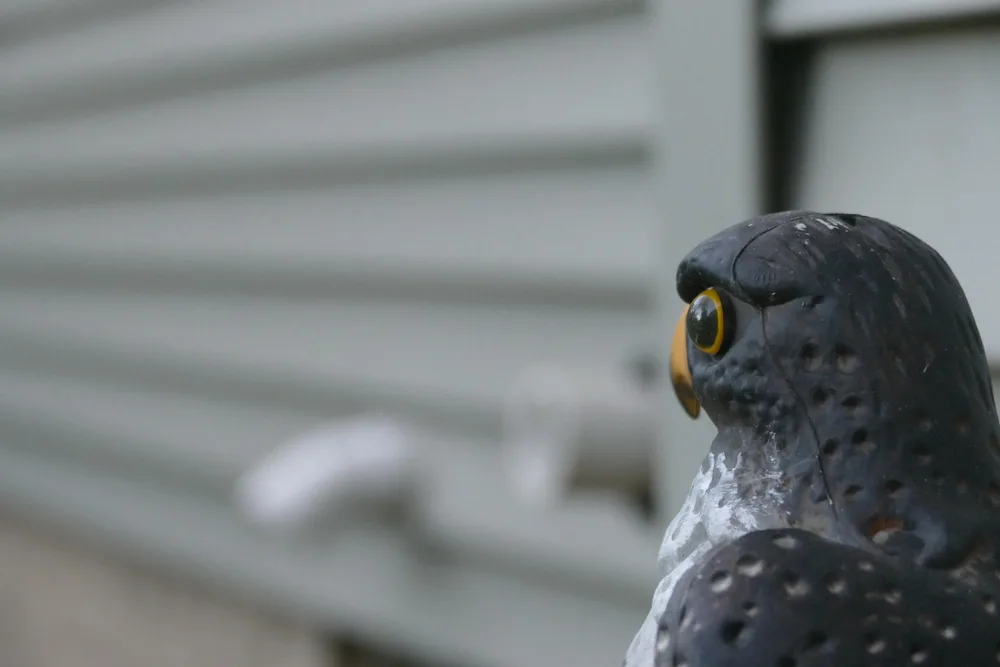
Since rabbits are prey animals, they have plenty of natural predators to be wary of in the wild.
To a rabbit, the sight of a hawk, fox, owl, or snake is terrifying. We can use this knowledge to our advantage by adding some faux predators to the garden.
Plastic snakes, fake owls, and even cat statues (replete with reflective eyes) can be strategically placed around your yard to make bunnies think twice about munching on your grub.
Make Noise
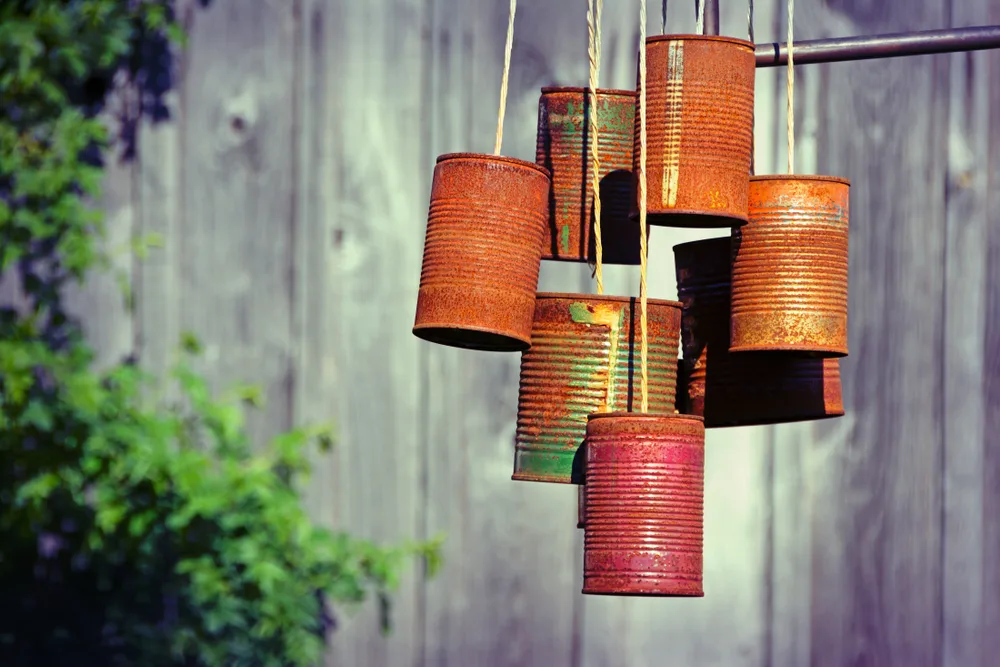
The oblong and curved shape of their ears makes bunnies excellent listeners that can detect small sounds that could indicate that a predator is near.
This sensitivity to sounds – with the ability to pinpoint exactly where it came from – is among the few defenses at a rabbit’s disposal.
Try hanging up some wind chimes, a string of aluminum cans, or pie tins to make a little noise every time there is a breeze.
Apply Blood Meal
Composed of dried and powdered cattle or hogs blood, blood meal is nitrogen-rich organic fertilizer that can be mixed in with compost or topsoil to give your plants a sizeable boost in vegetative growth.
Because it smells of blood, it is very effective for deterring rabbits, squirrels, deer, and other rodents from feeding on your plants.
4. Make a Rabbit Repellent Spray
Since rabbits really dislike the pungency of garlic, onions, and hot peppers, we can mix up a foliar spray using these ingredients to drive them away from your tasty crops.
To make, you’ll need:
- 3 large onions
- A whole head of garlic
- 3 hot peppers or 1 tablespoon of crushed red peppers
- 1 teaspoon of dish soap
Chop up or crush together onions, garlic, and peppers and place in a large bowl. Cover with water and allow it to stew for a day or two. Strain and transfer to a one gallon jug, add dish soap, and top off with more water.
Shake well and pour some of this stinky mix into a spray bottle and thoroughly spritz your plants. Reapply once a week and after every rainfall.
As an added bonus, this spray is also effective as an insecticidal soap for keeping soft-bodied bugs off your plants as well.
5. Choose Rabbit Resistant Plants
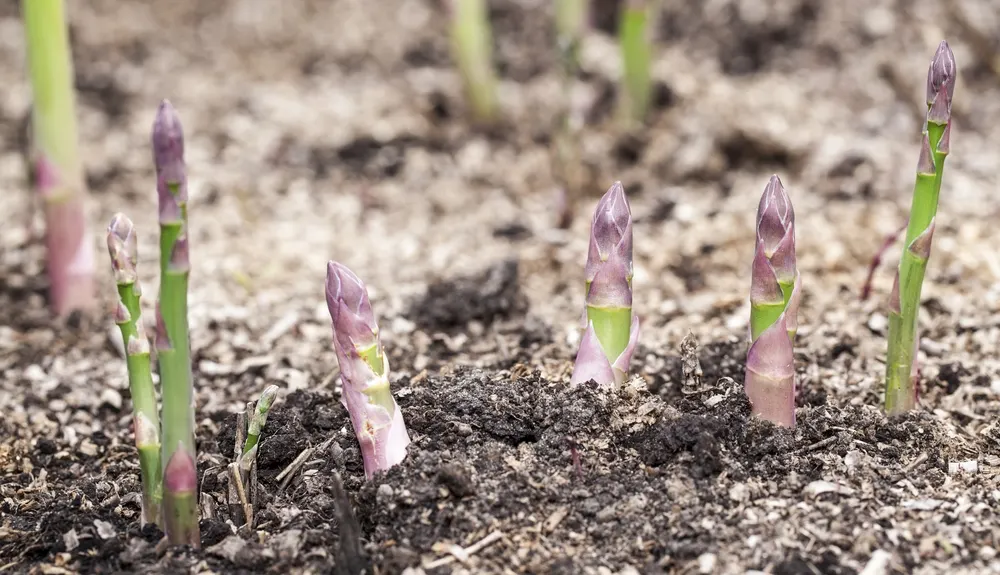
Rabbits select what to nibble on based on taste, nutritional value, and ease of access.
Thankfully, there are plenty of cultivars rabbits find less appetizing or are better suited to survive a herd of hungry bunnies.
Plants that tend to be more resistant to rabbits include lavender, lilac, calendula, daffodil, basil, mint, parsley, asparagus, onions, potatoes, tomatoes, rhubarb, azalea, butterfly bush, lamb’s ear, peony, and rhododendron.
Bear in mind that planting these varieties in no way guarantees protection against rabbits. When an animal is hungry and desperate enough, it will eat anything.
Rabbits are typically most attracted to seedlings and new plantings, as well as the soft growth of more mature varieties in spring. Rabbit tastes tend to vary by region and season as well.
But by stocking your garden with less appealing plants, your backyard bunnies might decide to move on to a tastier source of food.
6. Grow a Wildlife Garden
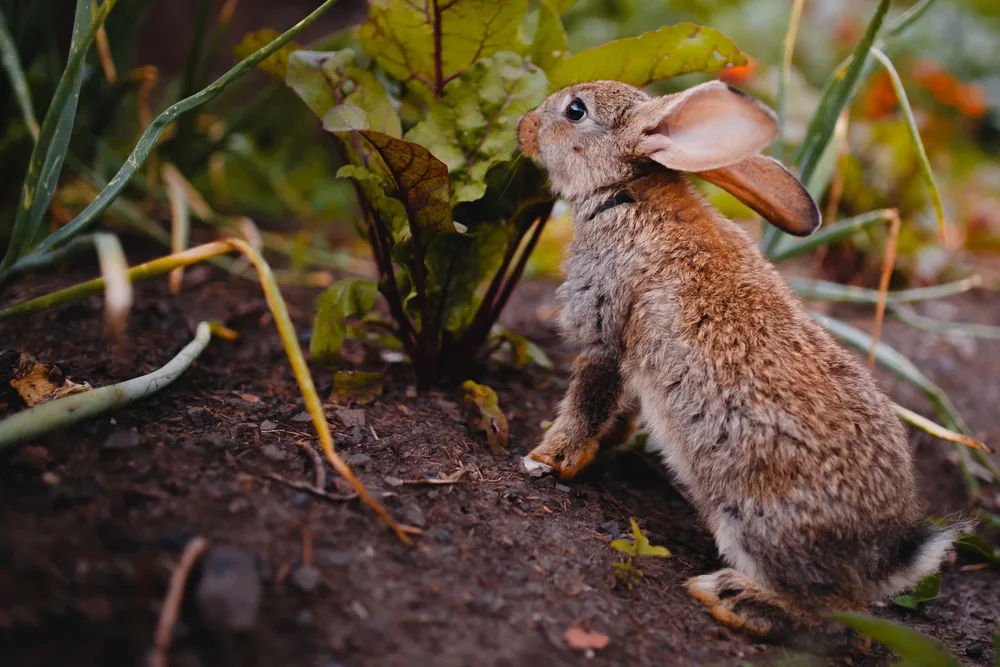
While you’re busy building fences and collecting hair clippings, it’s easy to lose sight of the fact that all the bunnies are trying to do is simply survive.
We can live in harmony with the fauna next door. In addition to the aforementioned exclusion and repelling tactics, the last trick is the kindest one: to grow food specifically for rabbits and other wildlife to eat.
Start with a plot 10’ by 10’ and stock it with nutritious fare rabbits love: clover, alfalfa, carrots, beets, radish, lettuce, endive, watercress, and arugula.
Add some milkweed for the monarch butterflies, sunflowers for the birds, and cone flowers for the bees.
Plant tall grasses or make brush piles nearby to provide a safer, more accessible space.
Try to plot the wildlife garden as far away from your cultivated ones as possible.
Creating this space as a diversion will help safeguard the plants meant for human consumption, while also nurturing local ecosystems. It will directly benefit your other greenery too by encouraging more pollinators and insect-eating birds to visit your lands.
And last, but certainly not least, rabbits can make a good contribution for your efforts by leaving behind an ample amount of fertilizer.
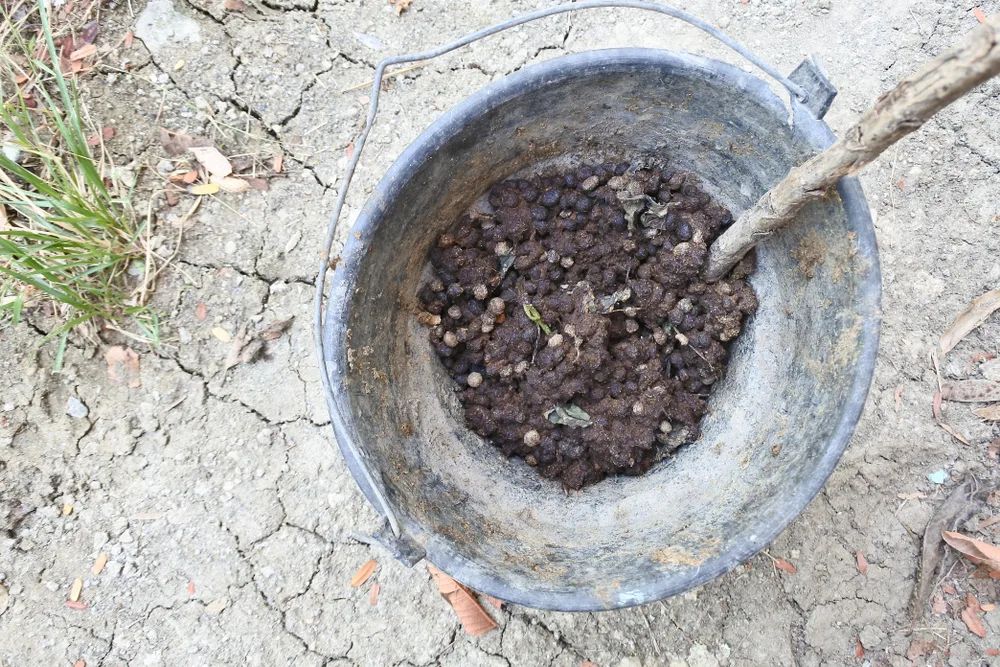
Rabbit droppings are rounded, dry pellets that don’t need to be composted because they break down quickly and are so gentle they won’t burn plants.
Rabbit poop typically has an NPK ratio of 2-1-1 with a slew of minerals like calcium, magnesium, copper, zinc, boron, and cobalt.
Rabbit manure is truly great stuff that will increase organic matter in your soil and improve soil structure, water retention, and drainage.
Usually deposited in small piles, you can scoop up the pellets and scatter a cup or two around each plant.
Or, make rabbit manure tea by soaking 1 to 2 cups of droppings in a gallon of water, allowing it to steep for 2 to 3 days, stirring every day. Once the pellets have mostly disintegrated, transfer to a watering can and give your lovelies a good drink.

Get the famous Rural Sprout newsletter delivered to your inbox.
Including Sunday musings from our editor, Tracey, as well as “What’s Up Wednesday” our roundup of what’s in season and new article updates and alerts.

